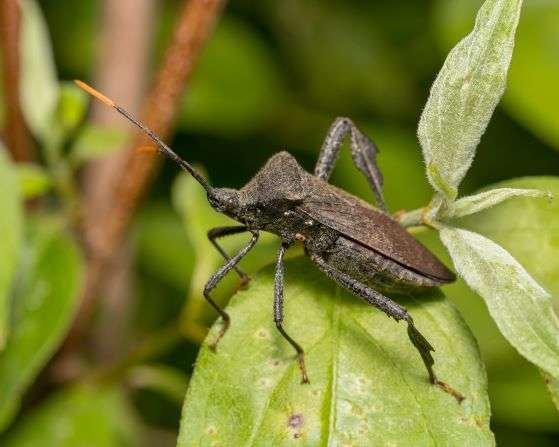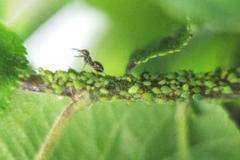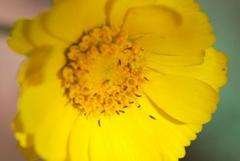
Pest S.O.S. 12 Most Common Summer Pests Part 1

First in a Summer Pest Series - Pest S.O.S.
Pests are prevalent in summer. Plant stress, abundant food and favorable breeding conditions give pests the advantage over the plants in your garden. The best method of treatment is prevention. Learn the 12 most common summer pests in gardens of the Sacramento area, and all of the information you need to combat them effectively.
To find out how to solve pest problems naturally, read Intro to Integrated Pest Management.

Leaffooted Bug
Description:
Young insects are approximately half an inch long with a black head, antennae and legs and a reddish body. Adults are about one inch long with a grey-brown color and flared hind legs.
Young insects are approximately half an inch long with a black head, antennae and legs and a reddish body. Adults are about one inch long with a grey-brown color and flared hind legs.
Damage:
Leaffooted Bugs have piercing and sucking mouth parts which they use to suck the juice out of leaves, shoots and fruits, leaving discolored indentations where they’ve fed. The damage inflicted is mostly cosmetic, it usually does not render the fruit inedible.
Leaffooted Bugs have piercing and sucking mouth parts which they use to suck the juice out of leaves, shoots and fruits, leaving discolored indentations where they’ve fed. The damage inflicted is mostly cosmetic, it usually does not render the fruit inedible.
Common Hosts:
Tomatoes and pomegranates
Tomatoes and pomegranates
Prevention:
- Eliminate Weeds. Adult leaffooted bugs feed on weeds when their preferred host plants are not in season.
- Clean up Debris. Adults overwinter under bark, in woodpiles, dried fruit droppings etc. Reduce populations buy keeping these areas clean.
- Attract Beneficial Insects. Planting a variety of flowers in your garden which bloom at all times of year will attract predatory wasps and Tachinid Flies–natural enemies of the leaffooted bug.
Control:
Affected plants can be sprayed with pyrethrin-based insecticides which are safe to use on edibles such as Bonide® Eight.
Affected plants can be sprayed with pyrethrin-based insecticides which are safe to use on edibles such as Bonide® Eight.

Aphid
Description:
Very small soft-bodied insects which can be green, yellow, red, brown, white or black. The young look like small versions of the adults, but adults will occasionally have wings.
Very small soft-bodied insects which can be green, yellow, red, brown, white or black. The young look like small versions of the adults, but adults will occasionally have wings.
Damage:
Aphids have sucking mouth parts which they use to rob the plant of its juices. An individual aphid does not cause noticeable damage, but they are extremely prolific and when there is an infestation they can cause significant stress to the plant. They also release a sticky excrement which can be a nuisance.
Aphids have sucking mouth parts which they use to rob the plant of its juices. An individual aphid does not cause noticeable damage, but they are extremely prolific and when there is an infestation they can cause significant stress to the plant. They also release a sticky excrement which can be a nuisance.
Common Hosts:
Almost every plant, they are especially fond of soft, flush new growth.
Almost every plant, they are especially fond of soft, flush new growth.
Prevention:
- Use Organics. Organic fertilizers promote slow, sustainable growth as opposed to synthetics which can cause plants to push a lot of rapid growth.
- Attract Beneficial Insects. Plant a variety of flowers to attract beneficial insects to help keep aphid populations down and to restore the balance between the pests and natural enemies.
- Control Ants. Ants and aphids are often found together because ants feed on the sticky excrement from the aphids. If you don’t take the time to attack both pests at once, they will likely return.
Control:
The trick to controlling aphids is to be persistent. They reproduce asexually, so populations get very high very quickly. On annuals or perennials usually spraying them off with water is enough to keep them at bay. Otherwise, using Neem Oil or Insecticidal Soap is usually enough to deter them. The Neem Oil should not be applied when temperatures exceed 90° F, and both of these control methods require that the insect come in contact with them in order for it to be effective.
The trick to controlling aphids is to be persistent. They reproduce asexually, so populations get very high very quickly. On annuals or perennials usually spraying them off with water is enough to keep them at bay. Otherwise, using Neem Oil or Insecticidal Soap is usually enough to deter them. The Neem Oil should not be applied when temperatures exceed 90° F, and both of these control methods require that the insect come in contact with them in order for it to be effective.

Ant
Description:
Small to medium sized crawling insects with a segmented torso. Can be red, brown or black.
Small to medium sized crawling insects with a segmented torso. Can be red, brown or black.
Damage:
Ants do no direct harm to plants, but they can protect aphids and scale from predators in order to consume their sugary excrement. They can also infest dropped fruit and become a nuisance.
Ants do no direct harm to plants, but they can protect aphids and scale from predators in order to consume their sugary excrement. They can also infest dropped fruit and become a nuisance.
Common Hosts:
Ants nest in any soil type, especially dry areas.
Ants nest in any soil type, especially dry areas.
Prevention:
- Clean up dropped fruit to keep populations down.
- Seal small cracks to your home with caulk to keep ants from getting in.
- Control Aphids. Where there are ants, there are usually aphids and vice versa. See above on tips to control aphids.
Control:
It’s impossible to completely eradicate ant populations, but you can keep them out of your home and living areas if you are diligent in baiting and trapping them. Terro® Liquid Ant Baits are an effective bait. Place them near trails and replace them often for best results.
It’s impossible to completely eradicate ant populations, but you can keep them out of your home and living areas if you are diligent in baiting and trapping them. Terro® Liquid Ant Baits are an effective bait. Place them near trails and replace them often for best results.

Thrip
Description:
Extremely small insects with long bodies, practically invisible to the eye.
Extremely small insects with long bodies, practically invisible to the eye.
Damage:
Thrips have sucking mouth parts to suck the juices out of plants and leave tiny dots known as ‘stippling’ behind. They also leave behind black specks of excrement. They are rarely fatal to the plant, but the damage can be unsightly, and they can spread plant diseases. Not all thrips are plant-feeders, some are predatory and feed on other thrips, so they can be considered a beneficial insect.
Thrips have sucking mouth parts to suck the juices out of plants and leave tiny dots known as ‘stippling’ behind. They also leave behind black specks of excrement. They are rarely fatal to the plant, but the damage can be unsightly, and they can spread plant diseases. Not all thrips are plant-feeders, some are predatory and feed on other thrips, so they can be considered a beneficial insect.
Common Hosts:
Almost every plant is susceptible, especially herbaceous plants and soft new growth.
Almost every plant is susceptible, especially herbaceous plants and soft new growth.
Prevention:
- Attracting Beneficial Insects. Provide a variety of flowers which bloom throughout the year. Natural enemies of thrips include green lacewing, minute pirate bug and even predatory thrips will all keep plant-eating thrip populations down.
- Use Organics. Thrips are most attracted to the lush new growth that is rapidly pushed by synthetic fertilizers. Organic fertilizers will keep plants healthy and give them the nutrients they need without pushing a lot of tender, susceptible growth.
Control:
Thrips can be a challenge to control due to the fact that by the time you notice the damage they’re usually gone. However, if caught early, spinosad can be a very effective treatment. Apply Bonide® Captain Jack’s Deadbug Brew, making sure to completely cover the foliage and the underside of the leaves too.
Thrips can be a challenge to control due to the fact that by the time you notice the damage they’re usually gone. However, if caught early, spinosad can be a very effective treatment. Apply Bonide® Captain Jack’s Deadbug Brew, making sure to completely cover the foliage and the underside of the leaves too.
